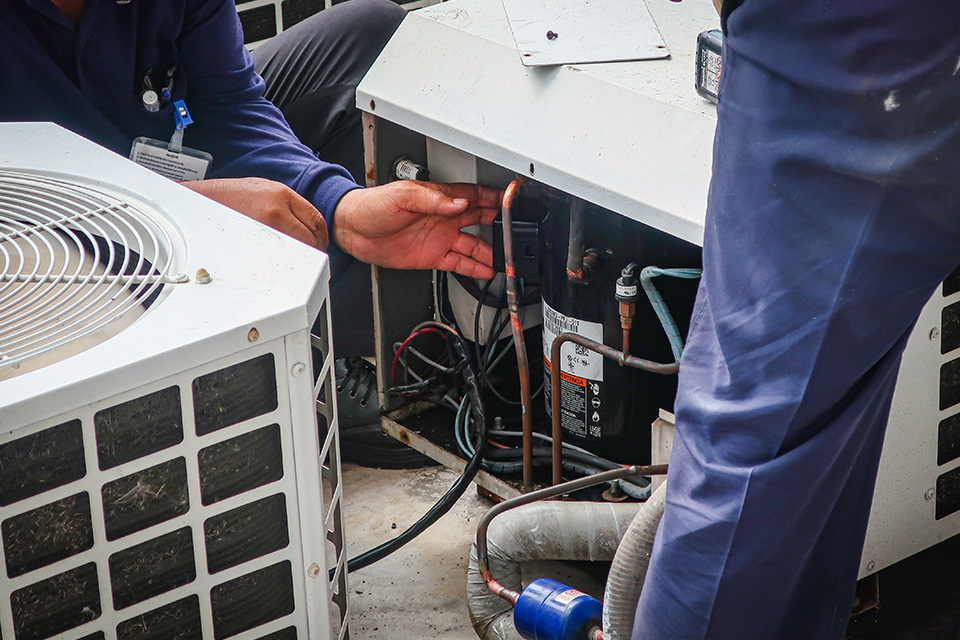
Air Conditioner Replacement Cost
June 4, 2024
How Often To Service An Air Conditioner
July 8, 2024How Much Electricity Does a Heater Use?
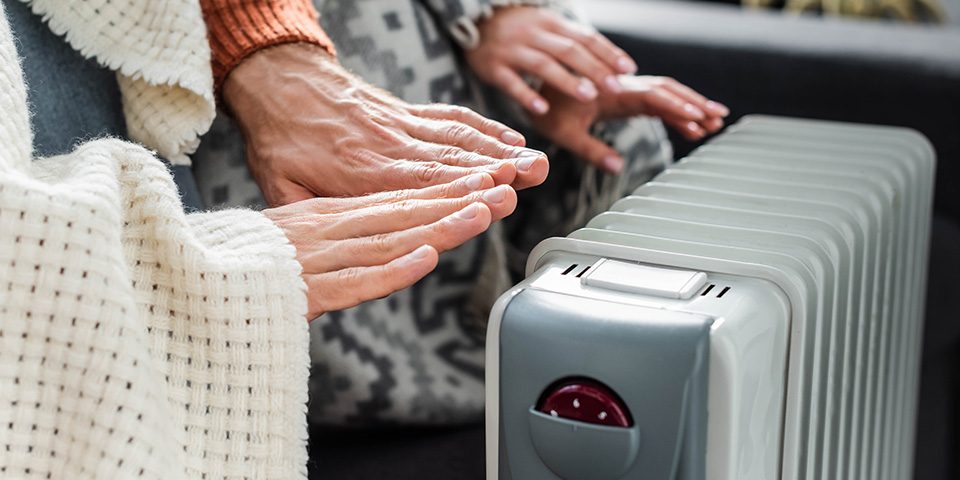
As winter approaches, it becomes increasingly important to understand the energy consumption of your heater. Whether you rely on a space heater for a single room or a central heating system for your entire home, being aware of your electricity usage can help you to manage your energy consumption effectively, ultimately leading to savings on your utility bills. Electricity usage is based on several factors, including the heater type, the heated area and energy efficiency. Most space heaters are small and use approximately 1500 watts per hour, while large ducted units can use up to 15,000 watts per hour. We break down how electrical use is calculated, energy efficiency ratings, the electrical consumption of different heaters, and how to save electricity on your monthly bills.
How is Electrical Use Calculated?
Electrical use is calculated by the number of watts (W) of power used over a period of time. The higher the wattage, the higher the energy consumption and the more costly. For instance, a 1200-watt heater will use twice as much electricity as a 600-watt heater. While watts are the power measure, electricity usage is measured in kilowatt-hours (kWh), which you will see on your electricity bill. 1000 watts equals one kilowatt of power (1kWh) expended in one hour. A 1000-watt appliance operating for one hour equals 1 kWh, while a 500-watt appliance will take twice as long (two hours) to register the same energy usage.
Understanding the wattage is essential for calculating electrical use. Heaters should have the wattage listed on the label. However, contact the manufacturer or look up the device number online if you need help locating it. You can also estimate electrical use by looking at the kWh on your electricity bill and multiplying that figure by the hours the heater may run.
Definition of terms:
- Wattage (W) – The measure of power usually found on the heater.
- Kilowatt (kW) – The measure of power is equal to 1000 watts.
- Kilowatt-hour (kWh) – 1 kW of power consumed over an hour (energy use is paid for by the kilowatt hour).
- Tariff: The amount you are charged per kWh on your electricity bill.
How to calculate approximate cost:
- Cost – Amount of kWh multiplied by the electricity tariff.
Understanding Energy Efficiency Rating
Some heaters will display an energy efficiency rating, which can help to calculate how much energy a heater will use. The more stars, the more energy-efficient the product, and the more savings. Designed by the Australian Government, this star rating is a great way to help you make an informed choice on the type of heater you purchase, considering energy consumption and running costs.
Most products are rated from 1 to 10 stars and given an energy consumption number of how much electricity a product will use each year in kilowatt-hours. While heaters with a good energy rating may be more expensive initially, the long-term savings can be substantial.
Electrical Use of Different Heater Types
Electrical heaters fall into two main categories – in-built heaters and space heaters. Both types have pros and cons regarding electricity use and energy efficiency. With so many choices on the market, we compiled a list of electric heaters, estimated the electricity consumption and cost per hour.
Electricity Usage of In-Built Heaters
As the name implies, in-built heaters are permanent fixtures connected through wiring in a home. In-built heaters can be as simple as an electric fireplace recessed into a wall or as complex as a fully automated ducted system. Here is a list of in-built electrical heaters and an estimate of how much energy each will use.
Reverse Cycle Heating
- Reverse cycle heating is a dual-system unit that offers both heating and cooling. Reverse cycle units will heat rooms when the temperature outside is as low as minus 10 degrees Celsius.
- Electricity usage: Reverse-cycle heating units use about 3000 watts or 3kW per hour, which costs about $1 an hour. Reverse cycle heating units are among the most energy-efficient, particularly in heating mode.
Ducted Heating
- Previously, the most common ducted heating has been gas, but with new regulations, ducted systems are being replaced with electric heating and cooling systems. A ducted system means the air is circulated through the roof or under the floor from ducts. Ducted electric heating systems will tend to be more expensive than the previous gas ducted units; however, replacing the gas systems with reverse cycle ducted units can be an energy-efficient and cost-effective option as they transfer the heat from outside.
- Electricity usage: Ducted heating in an average home will use about 2000 watts or 20Kw of electricity per hour, costing about $1 to $2 per hour. A ducted system will be larger than a wall unit to service a larger area, thus increasing electricity consumption. The energy star rating will reflect both the heating and cooling elements.
In Slab Heating
- Also known as underfloor heating, this type of heating is installed directly into the top layer of the slab reinforcement before the concrete is poured. The electric heating cables heat the slab and warm the floor above with radiant heat. Although it is most commonly installed in new builds, electric slab heating can be installed during a renovation. Electric in-slab heating provides even heat throughout the home or can be installed in small rooms like bathrooms.
- Electricity usage: In-slab heating uses about 1500 watts or 1.5kW of power per square metre, costing about $2.10 per hour for a 5-square bathroom. As it can be an expensive option, many people tend to use it for smaller rooms rather than trying to heat the entire house.
Electric Fire
- These can be built into the wall or used as a portable option. Electric fires look like wood fires with real flames but only use electricity and a fan to heat the home. Unlike timber fireplaces, an electric fire is turned on at a switch. The electric heating element starts to produce heat, and either a heated coil or infrared technology creates the illusion of an open fireplace.
- Electricity usage: Most electric fireplaces use about 1600 watts or 1.6kW per hour, costing about 52 cents per hour. An electric fireplace is viable for aesthetic appeal and comfortable heating in small areas.
Panel Heating
- Wall-mounted electric panels produce direct heat straight across the room, ensuring every home corner is comfortable. They are popular for those wanting to set different temperatures in every room or heat smaller living spaces.
- Electricity usage: Panel heaters use about 2000 watts or 2Kw of electricity per hour, costing about 72 cents per hour, and are one of the most energy-efficient heating systems. A 2kW panel heater can heat a room to 22 square metres.
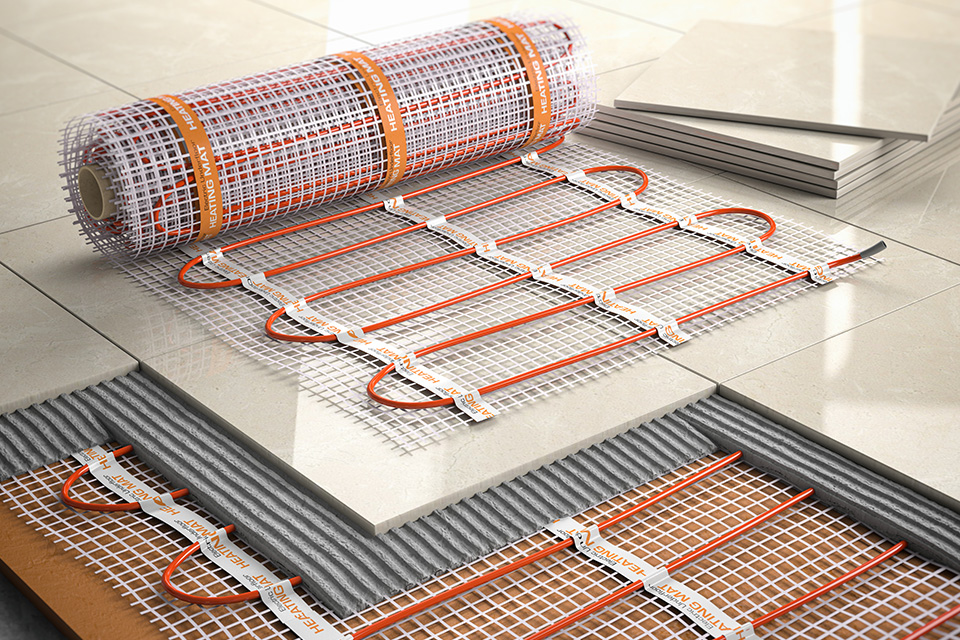
Electricity Usage of Space Heaters
Unlike built-in heaters, space heaters tend to be portable and used mainly to heat one area. Space heaters have a power cord that must be connected to a power outlet to work. When used correctly, a space heater can be a safe and economical way to heat a room during the colder months. Often, space heaters will be used instead of the home’s built-in heating system to save money by heating one area. Modern space heaters have safety features that cut the heater off automatically if overheating or when any water is detected. Regarding energy usage, the average space heater has low and high settings ranging between 750 and 1500 watts. Here is a list of space heaters and their estimated electricity consumption.
Radiant heater
- These heaters use infrared radiation to produce heat. The exposed heating element heats anything in front of the appliance and provides instant warmth. Some radiant heaters include a blower fan. Portable radiant heaters are often less expensive on the market and are effective for heating small areas like bathrooms, studies or bedrooms.
- Electricity usage: Radiant heaters vary in size, but the average is 2400 watts per hour, costing about 80 cents per hour.
Fan heater
- These operate by fanning heated air and are usually small and portable. Fan heaters circulate heated air immediately and evenly and are efficient for individual rooms. The fan’s speed can be adjusted for temperature regulation, and some fan heaters have timers, thermostats and other controls to customise how the heater works.
- Electricity usage: Electric fan heaters use between 1000 and 2400 watts per hour and cost between 40 and 80 cents per hour.
Oil column heater
- Although called oil column heaters, these space heaters run on electricity, not oil. The oil only runs as a heat reservoir to store and release the energy over time. Oil column heaters are portable units that plug into an electrical outlet. The electrical element is submerged in the oil, so when it heats up, the warmth is transferred to the surrounding liquid, which circulates through the channels and emits heat to the room through convection.
- Electricity usage: Most oil column heaters use about 1500 watts of power, costing about 55 cents per hour. Unlike other 1500-watt heaters, the heat remains for a longer period when the electricity is turned off. Although the oil column heater may use the same amount of power as the previous ceramic fan heater, at 15kW per hour, it will still provide heat when the power is turned off, making it more efficient for long-term heating.
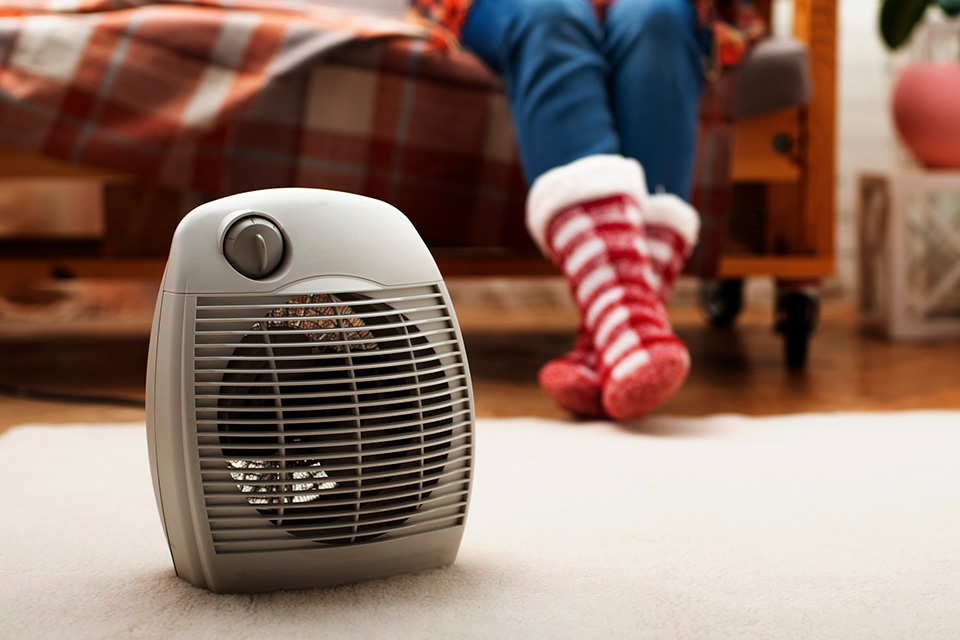
Other Factors Impacting Electricity Consumption
While electricity consumption is affected by things like the heater’s wattage, star rating, and hours of usage, these factors can also have an impact.
- Home design, size, and construction materials. The more compact and uncomplicated a home design is, the more energy efficient it will be. A square, rectangular or dome shaped home will have less surface area, and therefore less heat loss compared to a home with irregular shapes with a greater surface area. The size of the home impacts electricity consumption as the more significant the home, the larger the area to heat. Construction materials can also impact energy efficiency significantly. Heavy materials like concrete, bricks, and steel provide thermal mass when adequately utilised.
- Insulation. The right amount and type of insulation will help prevent heat loss and maintain an ambient indoor temperature. Insulation like fibreglass or cellulose should be installed in walls, floors and roofs.
- Wrong size heater. If a heater is not large enough to heat a space, it will most likely be kept running longer, thus increasing power consumption and adding to electricity costs.
Tips For Saving Electricity With Your Heater
There are always things you can do to save electricity on your heating bill. Using a few lifestyle adaptations, tips and tricks, you can keep your heating costs to a minimum.
- Use a programmable thermostat. Setting your thermostat between 18 and 20 degrees Celsius is a great way to save electricity; every degree the heating is increased can add up to 10% to energy usage. You can also program the thermostat to only have the heating on when needed and to be turned off overnight.
- Draught-proof windows and doors. This is one of the cheapest ways to retain heat in the home and can help save up to 25% on electricity consumption. Seal off gaps around doors, windows and floor-to-wall architraves either with a weather sealant or simply using draught stoppers.
- Use quality window furnishings. Quality window furnishings and blinds make a big difference to retaining heat in a home, as up to 40% of a home’s energy can escape through windows. Fabrics and blinds with good insulation and a thermal lining are worth investing in. Curtain boxes and pelmets across the window’s top also help reduce heat loss.
- Zone your heating. By having the heating zoned, you are only heating the rooms you use. This is easier with a modern, ducted heating system but some older ducted units do allow you to open and close vents.
- Use energy-efficient heating. Using energy-efficient reverse cycle heating and cooling will reduce emissions of a standard electric heater by one-third and one-fifth, depending on the model. When considering energy-efficient heating, utilise the energy rating labels to choose the right system for your home and the environment.
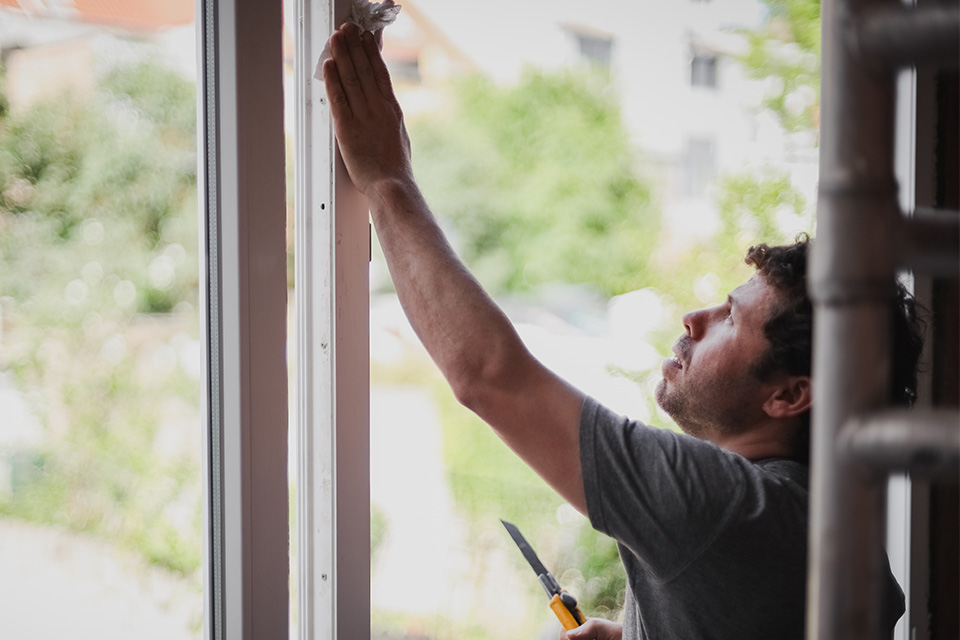
Understanding how much electricity a heater may use will be helpful when preparing for winter bills. In this article, we have discussed how to calculate in advance how much electricity your heater may use and how to distinguish which heater is the most energy-efficient for your home. For more information on how much electricity a heater may use, contact the friendly team at Simplyair Heating and Cooling.
 Schedule a quote
Request a callback
Schedule a quote
Request a callback

Call us Mon-Fri: 8:30am-5pm or leave us a message for a callback.
